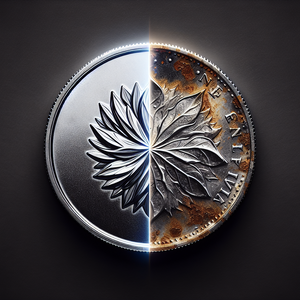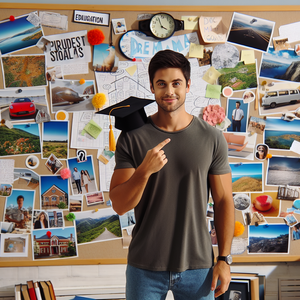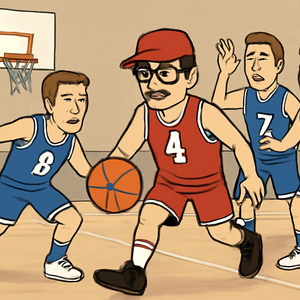Evolutionary Art: Unleashing Creativity with Genetic Algorithms

Genetic algorithms draw inspiration from the biological processes of evolution, employing mechanisms akin to crossover and mutation to evolve solutions iteratively. When applied to the realm of art, these algorithms simulate an evolutionary process that produces visual works, often resulting in unexpected and original creations. By defining parameters such as color schemes, shapes, and textures, artists and programmers set the stage for the algorithm to explore a vast array of creative possibilities. This collaboration between human intention and machine exploration paves the way for a new frontier in artistic expression, where the boundaries of imagination are continually expanded.
Examples of Evolutionary Art
A seminal figure in the field of evolutionary art is Karl Sims, whose pioneering work has left an indelible mark. Sims utilized genetic algorithms to craft digital images that evolve over time. His renowned project, "Genetic Images," invited viewers to participate in the evolutionary process by selecting the images they found most appealing. This interactive element not only engaged audiences but also demonstrated the potential of genetic algorithms to produce complex and aesthetically pleasing artworks. In the realm of architecture, the innovative firm Zaha Hadid Architects has harnessed the power of genetic algorithms to conceive groundbreaking building designs. By establishing aesthetic and functional parameters, the algorithm generates a multitude of design possibilities, which human designers can then refine and develop. This approach has given rise to structures that are both architecturally advanced and visually striking, showcasing the transformative potential of genetic algorithms in design.
Implications for the Future of Art and Design
The integration of genetic algorithms in art and design heralds profound implications for the creative landscape. By introducing the machine as a collaborator, these algorithms challenge the traditional notion of the artist as the sole creator, raising thought-provoking questions about authorship and originality. When an algorithm generates a piece of art, who is the true artist—the programmer, the machine, or both? Furthermore, genetic algorithms have the potential to democratize the art-making process. By equipping non-artists with tools to create visually compelling works, these algorithms make art accessible to a broader audience. They also offer new possibilities for personalization, enabling individuals to generate unique art pieces tailored to their preferences. In the design sphere, genetic algorithms can optimize creative processes, leading to more efficient use of resources and time. By allowing designers to explore a wider range of possibilities, these algorithms push the boundaries of what can be achieved in both visual and functional design.
As we continue to explore the potential of genetic algorithms in art, we stand on the threshold of a new era of creativity. These algorithms are not mere tools but partners in the creative process, capable of generating art that is both innovative and thought-provoking. By embracing this technology, artists and designers can transcend the limits of their imagination, crafting works that mirror the complexity and beauty of the world around us. As we look to the future, the fusion of technology and creativity promises to redefine the landscape of art and design, offering exciting new possibilities for both creators and audiences alike.
Computational Artist
Digital art studios, tech companies with art initiatives
Core Responsibilities
Develop and implement algorithms to generate digital art using computational techniques like genetic algorithms.
Collaborate with interdisciplinary teams to incorporate artistic and technical perspectives.
Experiment with various parameters to explore creative possibilities and produce innovative visual outputs.
Required Skills
Proficiency in programming languages such as Python or Processing.
Strong understanding of algorithmic design and creativity.
Creative Technologist
Tech innovation labs, multimedia production companies
Core Responsibilities
Integrate emerging technologies such as AI and genetic algorithms into creative projects.
Prototype and develop interactive installations or digital experiences that blend art and technology.
Work closely with artists, designers, and engineers to push creative boundaries.
Required Skills
Experience with creative coding and interactive media.
Strong problem-solving skills and a passion for innovation.
Algorithmic Designer
Architectural firms, design consultancies
Core Responsibilities
Utilize genetic algorithms to generate architectural designs or product prototypes.
Optimize design processes by exploring a wide range of aesthetic and functional possibilities.
Collaborate with architects and product designers to refine algorithmically generated designs.
Required Skills
Background in architecture or industrial design with computational design skills.
Familiarity with CAD software and algorithmic modeling tools.
Digital Art Curator
Art galleries, cultural institutions
Core Responsibilities
Curate exhibitions of digital and computational art, focusing on works created using genetic algorithms.
Engage with artists and technologists to showcase innovative art forms.
Educate audiences about the intersection of technology and art.
Required Skills
Knowledge of contemporary digital art trends and technologies.
Strong communication and organizational skills.
AI Research Scientist in Art
Research institutions, tech companies pioneering in AI
Core Responsibilities
Conduct research on the applications of AI and genetic algorithms in the creative sector.
Develop new models and techniques to enhance the capabilities of creative AI.
Publish research findings and collaborate with artists to apply AI innovations.
Required Skills
Advanced degree in computer science or a related field with a focus on machine learning.
Strong analytical skills and experience in AI research.


